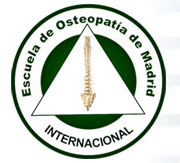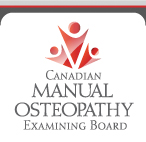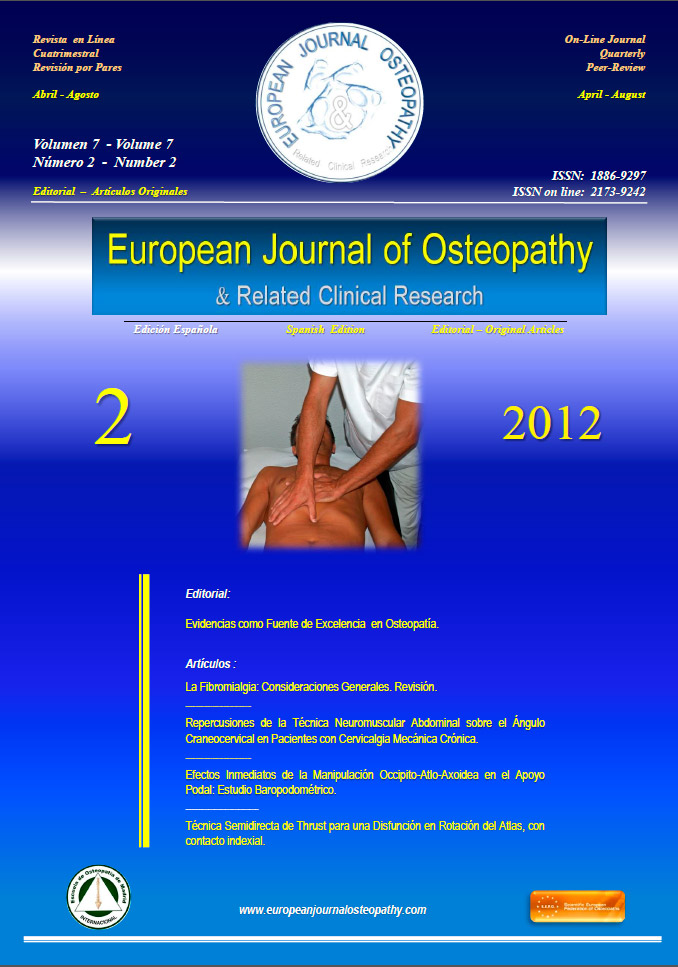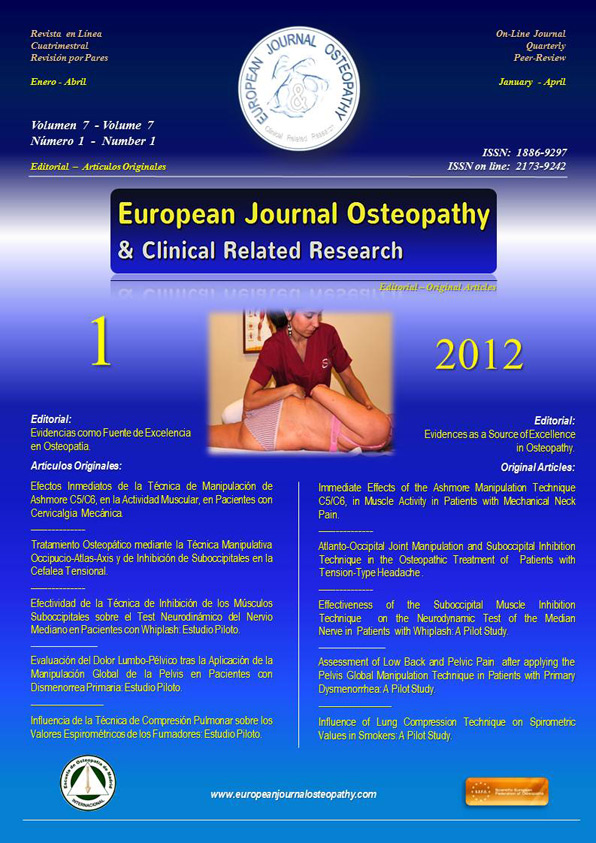by
Raymond J. Bishop, Ph.D.
Imagine the following scenario. A yoga instructor comes into your office saying she received structural integration work and is interested in continuing. Her structure suggests that she has had good work, her body looks fairly open and her tissue feels responsive. Her main complaint is that, while her previous work proved beneficial, she feels somehow incomplete. As you ponder the best way to approach this challenge, you have an idea. Courageously, you say: "If you have heard this word used in any of your previous sessions, I cannot not help you." "What word?" she asks. "Integration," you reply. She admits that the term was never used previously.
Does this seem an odd hypothetical? As peculiar as this might sound, this discussion recently occurred in my practice. What may seem contradictory about this scene is the fact that integration is one of those words we all supposedly use and think we explain fairly well. Therefore, you might assume that a previous structural integrator might have used this term and more than adequately explained what she meant by integration well before my client made her way to me.
This and similar experiences led me to suspect that few of us truly understand what integration means or how to apply it. Reflecting on this matter later, I asked myself some fundamental questions about integration and how it expresses itself in my clients' bodies. I would like to consider here three questions which have been of interest to me for some time. These questions are: What is integration? What are the characteristics of an integrated body? How do we help our clients internalize integration?
Integration is, I believe, an amorphous term frequently bandied about by all structural body workers. When we try to define it, we soon find that our carefully languaged and often conventional definitions say very little. If pressed, most of us quickly offer memorized responses that unfortunately merely add to the steadily advancing terminological confusion. To illustrate this, let's look at a few standard definitions of integration.
You would think that the writings of Dr. Rolf would be an obvious choice. After all, most structural systems of bodywork developed over the past 50 years owe a great debt to Rolf's writings and teachings. Her notions of building order and structural coherence remain paradigmatic for thousands of integrative bodyworkers throughout the world. Interestingly, however, while she uses this term frequently, we learn little about the exact nature of integration or how it works from her writings. Here is a typical observation on the nature of her work: "Structural Integration is a system that induces change toward an ordered patterning."2 Consider this intriguing explanation. "Structural Integration of a body can and does create a whole man who is greater and more competent than the man embodying the sum of random parts."3 These are tantalizing and in some ways profound notions, but what do we really learn from these and numerous similar passages? Not a great deal.
We might next look at Dr. Rolf's notions of how the basic ten series builds order. Since Ida's book is more a theoretical introduction than an instruction manual, let's look elsewhere for ideas. In a familiar collection of quotes by Dr. Rolf we find this observation. "This is the important concept, that Rolfers are integrating something. From the first day we see the client, we are putting him together, we are integrating him. We integrate him at the end of the first hour, the end of the second, third, fourth, fifth, sixth, seventh and eighth. At every hour before that man or that woman walks out the door, we should have integrated him to the place where he has the best, most efficient use of his system that he can have at that level."4 Sounds great but, what does this mean and how do we accomplish it?
Obviously, what Dr. Rolf is describing is the underlying concept of her largely misunderstood teaching tool, the ten series.5 As we all know, this traditional cycle of ten sessions is divided into three sub-groups: sessions 1-3 focus on the surface layers of connective tissue; sessions 4-7 open and balance the deep layers and the last three sessions, 8-10, integrate the body. All this leads to the circular statement that we integrate in every session, but where we really integrate is in the integrative hours. If we try to look a bit deeper at how we do this, we are left with equally vague notions of the 8th hour as a lower session, the ninth hour as an upper session and the tenth hour as a connecting (joint horizontaling) session. You might even say that true integration only occurs in the 10th hour, as this suggests. "In the tenth hour we put bodies together. Putting together means relating imperfect segments so that they create a functional whole."6 The original explanation of these last three hours is that we use them to clean up and tie together whatever we missed in the previous seven sessions. If we do this properly, we evoke higher levels of order in the structure. What we soon learn is that this is extremely difficult to see or explain, and even more difficult to teach.
Dr. Rolf's integrative sessions should do the following: by working first on unresolved strains in the lower body, then the upper body and finally horizontalizing and activating the joints, they move a structure closer to integration. If things were really that simple, anyone could memorize her familiar protocol, reproduce it with all clients and create an integrated body. A rather nave notion the absurdity of which is manifest in those many supposedly integrated clients we see in our practices routinely. Their systems may have nice verticals but often miserably fail to express true order and coherence. Unfortunately, after this rather long explanation, we are still not much closer to understanding what integration is.
What if we look beyond the basic series for answers? We might examine Dr. Rolf's advanced series (her rarely employed five series) or the advanced model developed by Jan Sultan, Michael Salveson and Jeffery Maitland.7 The latter model is a creative approach to the work which replaces the more familiar sequence of sessions with a series of principles, taxonomies (orderly systems of classification) and structural components. The freedom of this technical model reflects the intellectual orientation of its developers. However, the writings describing both models fail to define integration any better than Rolf's articles or books.
We might also explore the numerous basic introductory books by several Rolfers and the more original works of such former Rolf students as Tom Myers,8 Louis Schultz and Rosemary Feitis.9 Myers' "myofascia train" model, for instance, provides an elegant conceptual model for identifying and easing connective tissue strain patterns. Schultz and Feitis, in their book on fascial anatomy, identify horizontal strain patterns and suggest techniques for releasing these and other palpable restrictions. Here again, both imaginative models propose novel ways of seeing and addressing myofascial strain, but do not directly address the issue of integration.
I believe that few of us, with the obvious exception of Dr. Rolf's most skilled and sophisticated students, really understand or instill integration in the way that Dr. Rolf did and furthermore that spending time in their classes is not sufficient for most of us to truly understand what integration is although we may (through osmosis and considerable later reflection) get closer to a working understanding of how it works. Perhaps, this difficulty stems from Rolf herself who was not always clear in her teaching. Although rigid in many ways about the proper way to do the basic series, she nevertheless continued to experiment with new ideas and reconsider her ideas to the very end. This open-ended quality was, I infer, both a source of inspiration and frustration for those trying to learn what she was actually doing in class. I infer that if her ideas about integration were clear to her students, then those of us in the second and third generations would have a greater sense of unity as to what such fundamental terms as integration actually mean. Such does not seem to be the case.
This leaves us with a real challenge. Let us consider some aspects of what we might universally agree are a few signposts of an integrated system and see how they help us understand integration. Now to the second question. What are the characteristics of an integrated body?
The first thing that might come to mind is that an integrated body should be symmetrical. And, while this seems self-evident, when we study the body with any degree of precision, we quickly realize that true symmetry is an illusory goal. One reason for this is the random anatomical variation found in the human myofascial system. For example, we often find major muscles and organs missing or "misplaced." Such activities as weight lifting, marathon running, or cycling can also create unusual imbalances in muscle groups.10
Judith Aston offers another interesting theory for the body's inherent asymmetry. "It seemed obvious then that the asymmetrical design of the external body was because of the size, weight and placement of the internal organs and the developmental phases from one system to the next. The asymmetry of the lungs, the two lobes (of the left), the three lobes (of the right), the position of the heart would probably explain why the left side would have the center of gravity closer to it."11 Dr. Rolf explains it this way. "Bodies are not perfect; the precise symmetrical planes of theory are not actualized in nature. Differences in habitual muscular use (right or left-handedness) as well as visceral structure (liver complex on right side compared to heart and stomach on the left) preclude literal symmetry. Nevertheless, to ensure reasonable physiological health, weight-bearing must approach a practical balance."12
The last sentence quoted above suggests that we might find a more viable expression of integration by improving a structure's balance. This proves a fruitful line of endeavor, in part, owing to a wealth of excellent studies that specifically address the relationship between order and balance. Let's briefly consider two of them. One important pioneer in this field is Dr. Amy Cochran, an osteopath and contemporary of Dr. Rolf. Her ideas appear in a recently published distillation of her ideas by her former pupil, Ida Thomas. Her five principles of balance: proper weight bearing, narrowing, lengthening, broadening and head centering represent a significant and neglected chapter in the evolution of thought on somatic education and awareness.13 Thomas stresses not only the need for balance but also the need to look at the effect of her exercises on balance and order in the larger context of the complete organism. "We have to avoid the fragmented approach and look at the total system because everything must be connected deep inside in different ways for the total effect of body alignment to take hold."14 This notion is fundamental to Rolf's notions of order as well and remains one of the most challenging abilities for any structural body worker to master.
Another important early exponent of somatic balancing is Mabel Todd. Writing in 1937, she expressed it this way. "We now realize that in the physical economy of the individual the many systems should be working in balance and unison and that thinking is a very part of their activity."15 Todd's quote expresses two important notions that provide useful insights into the nature of balance. She argues that balance is a system-wide expression of order and that in an intelligently balanced body, all components work in unison. These are certainly elements of an integrated system, notions not far removed from Dr. Rolf's views.
Rolf showed that we begin to order the body by balancing the connective tissue groupings (flexors and extensors) in a systematic manner, addressing strain patterns in all directions, planes and through a variety of myofascial pathways. By resolving these strains, Rolfers allow the body to approach equipoise or homeostasis, an optimal state of comfort, the state to which the body will tend to move naturally to achieve the greatest possible state of ease and coherence. I believe that this tendency of the body to prefer any movement toward balance is one of the primary reasons why properly sequenced Structural Integration "holds."
A less familiar component of integration is "translation," sometimes also called "end-feel."16 Translation is a certain quality of responsiveness, of movement through the tissues and, more particularly, through the joints. In a properly integrated body, the practitioner can test for the ease of translation through the body by feeling movement through the joints of the leg, for instance. If he dorsiflexes the client's ankle and gently presses on the calcaneus, he may test the quality of movement and determine how far up the leg he senses this movement as he presses into the foot. Ideally, he sees and feels it easily move up through the knee and hip joints. He might then try to extend this sense of coherent motion on through hinges of the spine, neck and into the occiput.
If he senses restrictions in this movement, he speculates as to what myofascial structures or joints are fixed at the site of the resistance. This will inform his work and help him direct his efforts to freeing those restrictions. After he releases these restrictions, he retests the movement to see if he has a better translation through the restriction and, if so, where the next restriction manifests. And so it goes.
We might also consider other universally accepted markers of integration. The most obvious marker is the degree to which the client is organized around the central axis or "line." This leads us to yet another definition problem. Since many have debated the meaning of the line for decades and since organizing bodies around the line (as originally taught by Rolf) resulted in artificially rigidified posing which her students often aped in a mocking manner, our sense of line only makes sense if we can finally reconcile more recent definitions with the traditional view.17 We might also look at the degree of horizontality of the pelvis, the "original purpose" of every session in Rolf's basic series classes. How many of us consider this as we do our final readings at the end of each session?18 We might also look at the arrangement of the blocks (or water balloons), the relationship of the axillary and appendicular skeleton, relation of sleeve to core, the relationship of the middle fascial layers to those surrounding them, the coherence of the lower leg and foot, the presence of clear horizontals and verticals, the absence of rotational strain or finally the ability of the organism to relate to gravity as if it were free of those adaptations we frequently cannot change. All these are important markers and yet in each instance the disagreement as to what each of them means and their relative importance is more pervasive than ever.
In the face of this challenge I offer an alternate suggestion for how to instill order and integration. To accomplish this, we must move from the realm of terminological confusion to the client herself. We have an opportunity to build integration by engaging our client fully in the process of her own integration. What is most important here is that the client must be actively involved in all stages of the integration process. We must help her develop a clear sense of the nature and quality of an emerging sense of order. She should be able to discriminate between freedom and restriction in a given joint and describe this difference in her own words. Helping guide and inform this language seems critical for creating integration in our client. For, while she may still feel better, if she lacks this felt-sense, it is questionable that true integration has occurred (this assumes that you accept my definition).19
This leads us to the notion of embodiment. Since embodiment has its own meaning-laden baggage, it might seem a problematic choice as the end-point of our terminological peregrinations. Certainly a valid criticism. We can in part solve this problem by limiting our definition. For my purposes, embodiment is having a coherent internal felt-sense and being able to articulate that sense in words of one's own choosing. By narrowing this definition, we can avoid some of the pitfalls of trying to reconcile theories of those many disparate disciplines which we normally describe as methods of embodiment.20 Rather than comparing various schools of somatic embodiment, what will prove more fruitful is to shift our attention from these methodologies to the client's subjective reality.
An oft-quoted statement of Dr. Rolf provides the means for effecting this shift. "We are not therapists, we are teachers." If we embrace this notion to its fullest, we admit that we do not do the work, but rather act as facilitators who effect changes and help focus our client's insights. How we define our terms and communicate this understanding to our clients will profoundly influence their experience of the work. Remarkably, the fact that we so far have no unilaterally accepted definitions of what our work is and how it effects change does not preclude us from instilling profound structural and emotional change. This is the genius and mystery of our work.
Our job is to shape our client's felt sense of the work. With understanding and awareness of the nature and quality of coherently structured change comes insight and from insight emerges embodiment. If this embodiment is generated in a manner that promotes order, coherence and a deeper understanding of internal felt-experience, then the client herself will define and articulate her own sense of integration.
This embodiment can only in part occur during the session. Most of this process happens in the real world. Application to real-life situations and teaching the client to become more fully aware of her body in actual situations will transform the client's notions of integration from an abstraction to a physical reality. Exercises, positional stretches, carefully directed and clear discussions, guided movement explorations and teaching basic awareness techniques will all help provide the client with anchors and guides for these private explorations between sessions.
To truly empower our clients and initiate transformation, we must encourage them to create their own somatic reality while providing them with a language and intellectual framework for doing so. This is an expression of integration that most clients can experience and language quite effectively. Our goal here should be simply to help our clients develop a language they understand and can easily adapt to any situation. Their ability to create and employ their insights will ideally make them more healthy, resilient and adaptable organisms, in other words, more completely integrated individuals.21
In the absence of a universally accepted definition of integration, this approach at least offers us a tool for effective communication, the efficacy of our communication being limited only by our ability to articulate our understanding of the language of Rolfing and define our terms as clearly as possible. This article is intended as a preliminary effort towards developing a clearer explanation of our work and our basic terminology. It will hopefully stimulate others to engage in the process of adding clarity and precision to how we describe what we do and how we transform human structure.
Notes.
1. Special thanks to Dr. Louis Schultz and my dear friends Harry Blazer, Dr. Steve Evanko and Libby Eason-Sener who patiently read and contributed invaluably to the seemingly endless revision process of this article.
2. Rolf, Ida P., Rolfing: Re-establishing the Natural Alignment and Structural Integration of the Human Being for Vitality and Well-Being (Rochester, VT: Healing Arts Press, 1977), p. 15.
3. Rolf, Rolfing, p. 207.
4. Rolf, Ida P., Ida Rolf Talks About Rolfing and Physical Reality. Edited and with an introduction by Rosemary Feitis (Boulder: The Rolf Institute, 1978), p. 40.
5. A full explanation of the nature of this misunderstanding is beyond the scope of this paper. Suffice it to say here that this distorted notion is based on the erroneous notion that Rolfing is the ten series and that the sequence of sessions is the sole means by which we build order in our clients. This nave view results in unqualified bodyworkers performing patterned sequences and expecting to create integration. If you accept the basic premise of this paper, it will be self-evident that one cannot create integration in this manner.
6. Quoted in class handout prepared by my friend and teacher Sally Klemm in her review of the goals of the sessions of the basic series. The remarks that follow this quote are in part based on ideas Dr. Louis Schultz shared with me in a personal e-mail.
7. These ideas are adapted from lectures and demonstrations by Jan Sultan during my advanced training and from Maitland's collection of essays: Principles, Taxons and Techniques (Boulder, CO: The Rolf Institute [n.d.]).
8. Myers, Thomas, The Body3: A Therapist's Anatomy Reader. A collection of essays published in Massage Magazine from 1997-2000.
9. Schultz, Louis, Ph.D. & Feitis, Rosemary, D.O. The Endless Web: Fascial Anatomy and Physical Reality (Berkeley: North Atlantic, 1996), pp. 53-82ff.
10. Thanks to Louis Schultz who shared this with me in a personal correspondence.
11. Pare, Steve, "An Interview with Judith Aston, Part II," Structural Integration: The Journal of the Rolf Institute, Vol. 30, No. 1 (Winter 2002): 10.
12. Rolf, Rolfing, p. 148.
13. Thomas, Ida M. Physio-Synthesis: Inner Muscle Balancing (Verdugo City, CA: Thomas Publishing, 1997), p. 19ff. There has been some discussion of the degree of influence of Cochran on Rolf. This is a gray area and I simply do not have an adequate knowledge of this disputed bit of our history. Thanks to Schultz for catching this and suggesting that one might read my remarks as implying a sense of chronology that I cannot substantiate.
14. Thomas, Ida, Physio-Synthesis, vii-viii.
15. Todd, Mabel, The Thinking Body: A Study of the Balancing Forces of Dynamic Man, Reprint ed. (Princeton, NJ: Dance Horizons, 1997), p. 3.
16. The notion of translation is not well discussed in somatic sources. It is a subtle quality that we learn to recognize and are often able to teach to their clients.
17. In a recent discussion in Atlanta (September 28, 2002), Louis Schultz described amusing anecdotes of Rolfers exaggerating the line with their waists and shoulders way back and an exaggerated lift in their necks and Dr. Rolf yelling across the room: "That is exactly what I am talking about. Now that's the line."
18. This observation comes from Louis Schultz and also from a video of a basic series I saw in which Dr. Rolf asked a beleaguered student several times: And what is the purpose of the first hour? After she got the answer: To horizontalize the pelvis, she reiterated the question several more times going from hour to hour. Clearly for her this was the primary goal of every basic session.
19. Thanks to Libby Eason for pointing out an important notion; that clients will often improve without really comprehending and understanding the process of embodiment or integration, and that they do not need to do so to feel better.
20. For good basic overviews of major "somatic embodiment" schools see: Johnson, Don Hanlon, ed. Bone, Breath, Gesture (Berkeley, CA: North Atlantic Press, 1995), and his Groundworks: Narratives of Embodiment (Berkeley, CA: North Atlantic Press, 1997).
21. This notion of adaptability as the most reliable sign of an organism's health came from my teacher, Jan Sultan. For a consideration of adaptability as an indicator of intelligence see: Frank T. Vertosick, Jr., M.D. The Genius Within: Discovering the Intelligence of Every Living Thing (New York: Harcourt, 2002), pp. 42-49ff.








 1:09
1:09
 Daniel Enriquez de Guevara
Daniel Enriquez de Guevara




























.jpg)






















0 comentarios :
Publicar un comentario